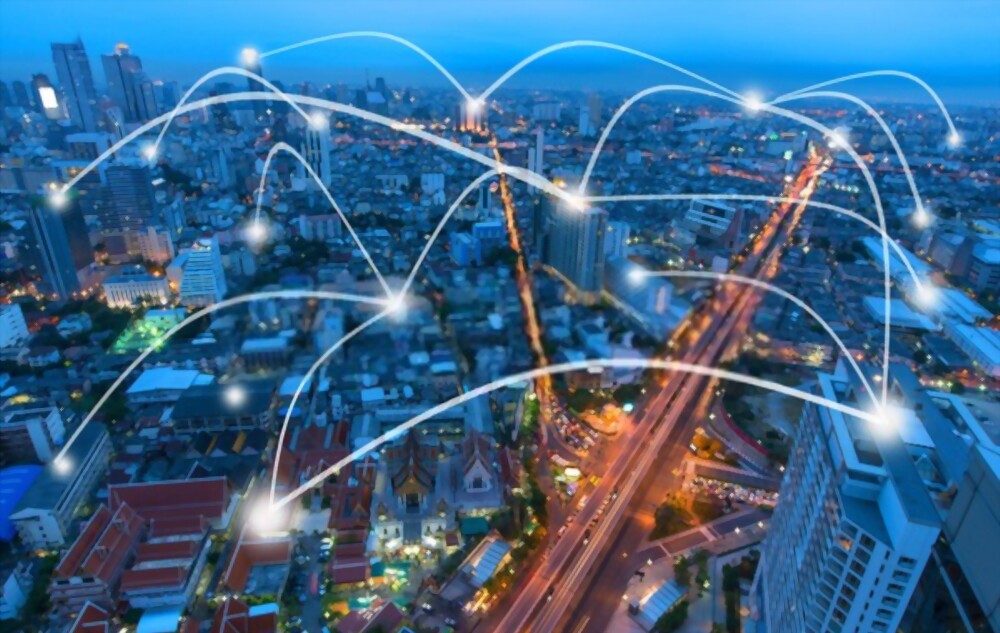The network effect is a phenomenon where the value of a good or service increases as a result of an increase in the number of people or participants. The network effect can be seen on the internet. Initially, few people used the internet in the military, and some researchers and scientists only used it.
However, more users who can access the internet result in more content, data, and services. By developing and improving online sites, more users join and do business with each other. The increase in internet traffic increases its value, which impacts the network.
How Network Effect Works
Network effects can enhance the experience as more people participate and encourage new participants to benefit from the network.
Networks are available on social media. For example, the more Twitter users post content with links and media, the more beneficial it is to the community. Networking platforms such as Facebook are overgrowing due to the network effect.

Network effect, is already happening for people who join social media platforms. With more and more users entering and participating, businesses that want to sell their goods and services are rushing to join these websites to capitalize on this trend. More advertisers make money from social media sites. As a result, online sites have become more robust and can offer more services to customers.
History of Networks Effect
With the advent of the telephone in the early 20th century, the concept of network effects emerged. Bell Telephone’s first president to obtain a patent, Theodore Vail, used the network effect to defend the telephone network monopoly. Metcalfe’s Law, which states that the value of a telecommunications network is proportional to the square of the number of users connected to the system, was created by Ethernet creator Robert Metcalfe, who later helped popularize the idea.
Today, the network effect has everyday applications, such as the value of social media companies like Facebook, Twitter, and LinkedIn. The more people who have accounts on these social media platforms, the more valuable the product and company are to their users.
ALSO READ : Best SEO Company Number #1, Increase Organic Traffic and Get More Leads
Effect of Network vs. Network Externality
Although they look similar, network effects and network externalities are different. An economic term called “network externality” states that the demand for a product depends on the needs of other people who want to buy that product. In other words, the way people believe others influence them
For example, if we see many cars in the parking lot of a restaurant, we may think the food is good. As a result, we try it because everyone else must be right. Fashion trends influence consumer shopping. Clothes often go in and out of fashion, mainly based on how customers buy and sell things.
Positive network externalities can cause network effects. If any of our friends are registered on Facebook, we may join in the hope of connecting with them, which is a good thing from an external point of view. Engagement will increase if we post high-quality content after joining and make many people enjoy the experience. This will result in a network effect.
How to Network Effect to Build a Business
Various service rental apps and websites are often profitable due to the networking effect of the internet. More customers rely on online directories as more professionals, such as tutors or electricians, list their services online. As more sellers join these marketplaces and sell their goods to customers who favor online shopping, e-commerce sites such as Etsy, eBay, and Tokopedia grow in popularity.
The network effect also influences the progress of ridesharing services. Companies such as Uber, Gojek, and Lyft grew and thrived thanks to users signing up and expanding their reach across many cities and states. The market value of both companies increases along with the number of drivers who join them.
How to Profit from the Network Effect
Businesses can grow by utilizing the network effect. We can increase product demand if we know what drives the network effect. Once the effect occurs, users act as sellers, spreading the product by word of mouth.
Businesses often compete to be first on the scene to capitalize on the market’s network effect phenomenon. For example, have you ever heard of a company offering a product for free? This strategy increases interest in the product by getting people interested and spreading the word about it. Then people will be willing to pay for it (or more as the price increases) as demand increases. The more people who use our product, the greater its value.
Network Effect and Pricing
If our business is in a market affected by the network effect, we may change the product’s price when the company starts rather than when the network effect starts. It makes sense to raise the cost of the product as the business expands due to the network effect.
To maximize profits, businesses often sell their products at the highest price possible without going beyond what customers are willing to pay. However, starting with a lower price (or, in some cases, giving the product away for free, as mentioned above) and then raising the cost of the product as the network effect increases will result in a more extensive user base.
ALSO READ : 10 Tasks and Roles a Digital Marketing Agency Needs to Know
Advantages and Disadvantages of the Network Effect
Any good or service that wants to benefit from the network effect must have traction or attract enough users for the effect to last. Critical mass is the number of users required for significant network effects. Once the critical mass is reached, the good or service will attract many new users because the network offers usefulness or benefits to customers. Thus, the prospect of network effects helps companies in their quest to become independent.
The influence of the network also helps entrepreneurs and intellectual property creators develop more effective and unique products.
However, there is a drawback: if fewer people use something, there will be congestion. Look at the examples available online: Too many users on the same network service can slow down the network speed and reduce user benefits. Providers of goods and services that use network effects must ensure that capacity can be increased sufficiently to meet the needs of all users. After gaining and maintaining critical mass, companies may lose efficiency and innovation, knowing that their consumer base is still strong. This is another possibility of failure due to network effects.
Benefits of Network Effect
- Motivate entrepreneurs and intellectual property creators to develop more innovative and effective products.
- Participate in increasingly valuable services to benefit users.
- Demonstrate how important it is to achieve significant mass.
Disadvantages of impact networking
- Too many people on the network can cause congestion.
- Providers of goods and services must ensure that capacity can be increased sufficiently to meet the needs of all customers, as this can result in a significant increase in costs.
- Once critical mass is reached, companies may become less creative.





